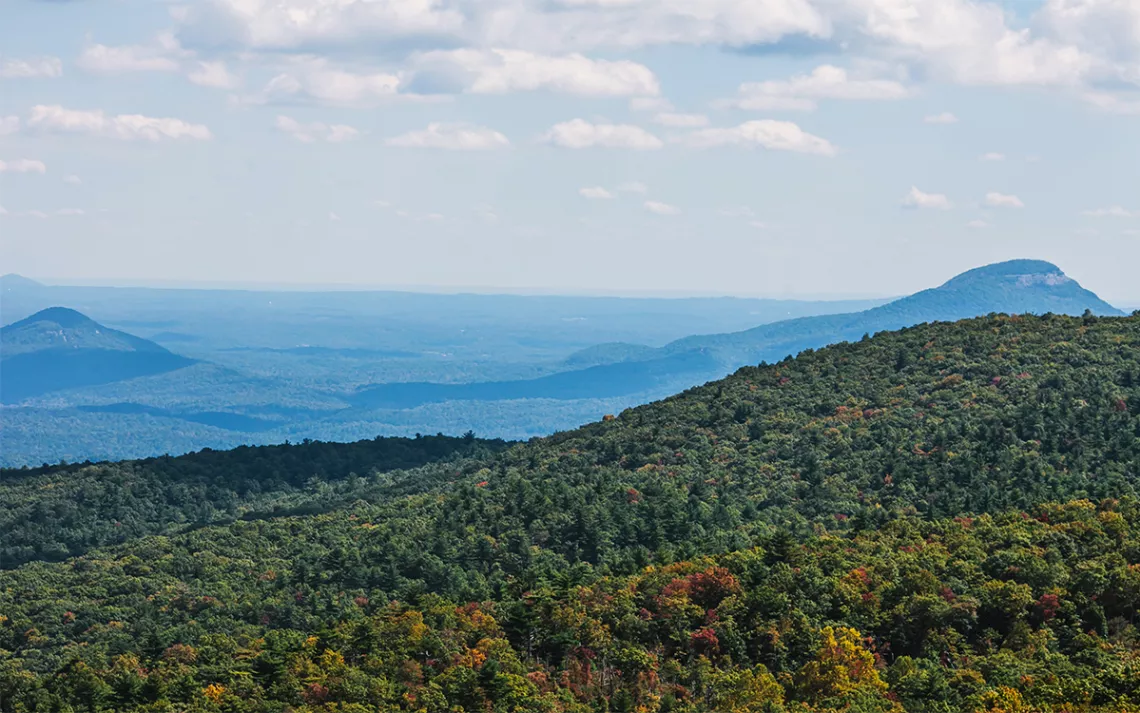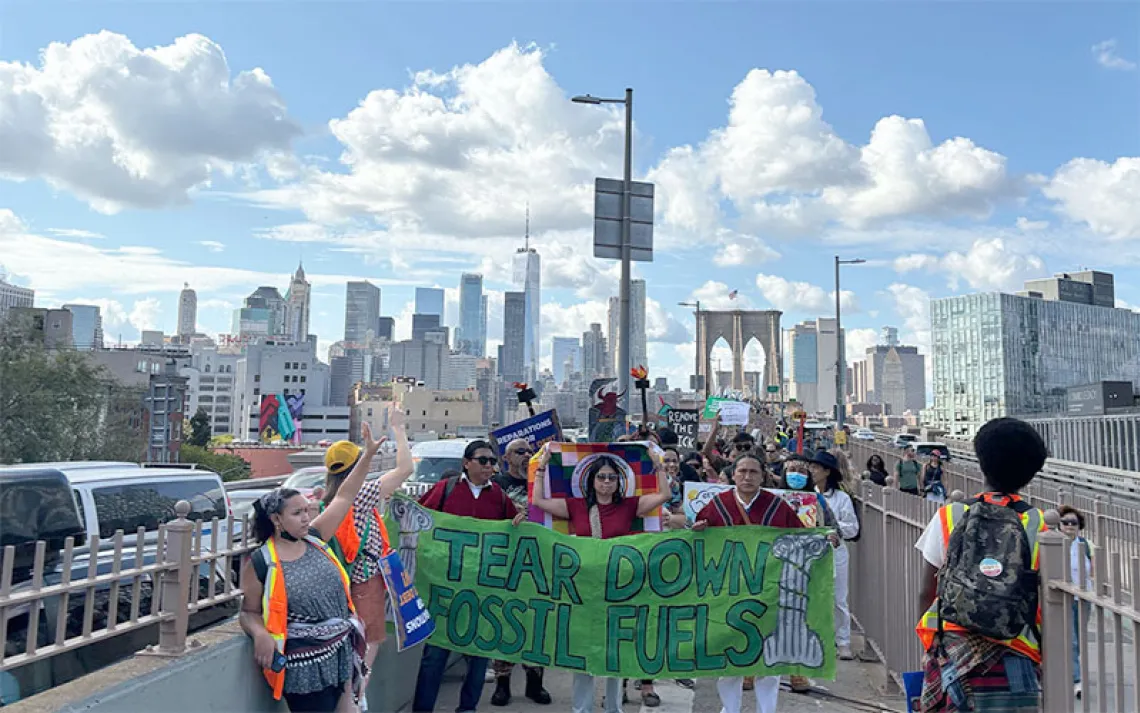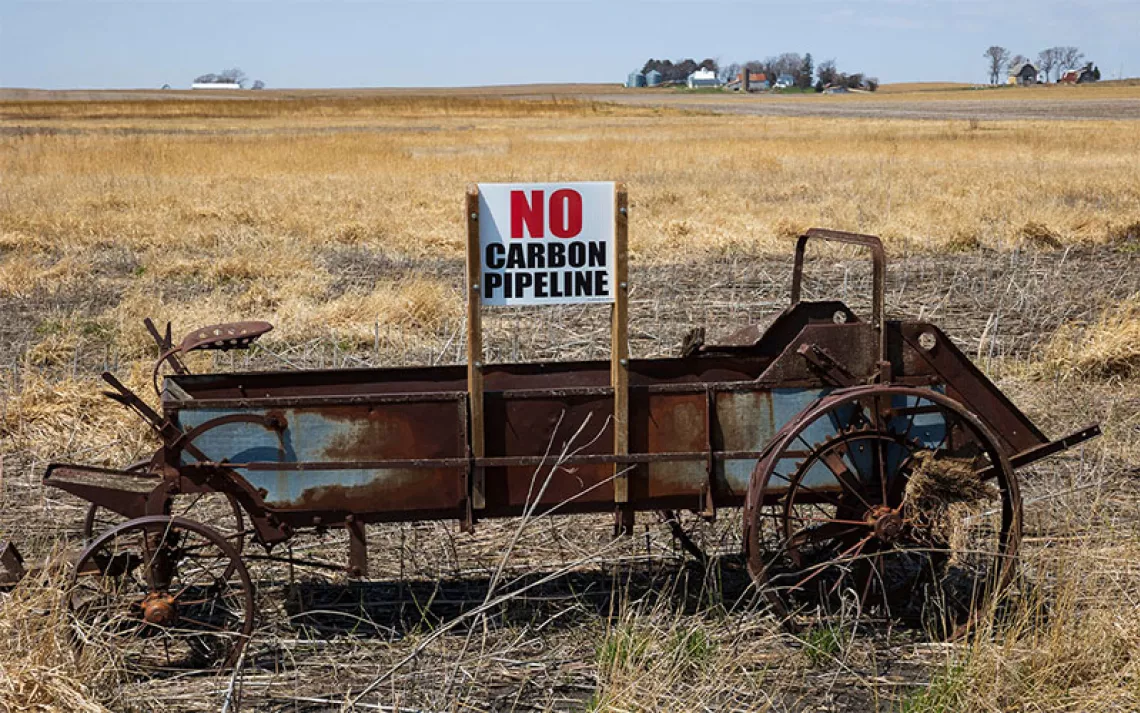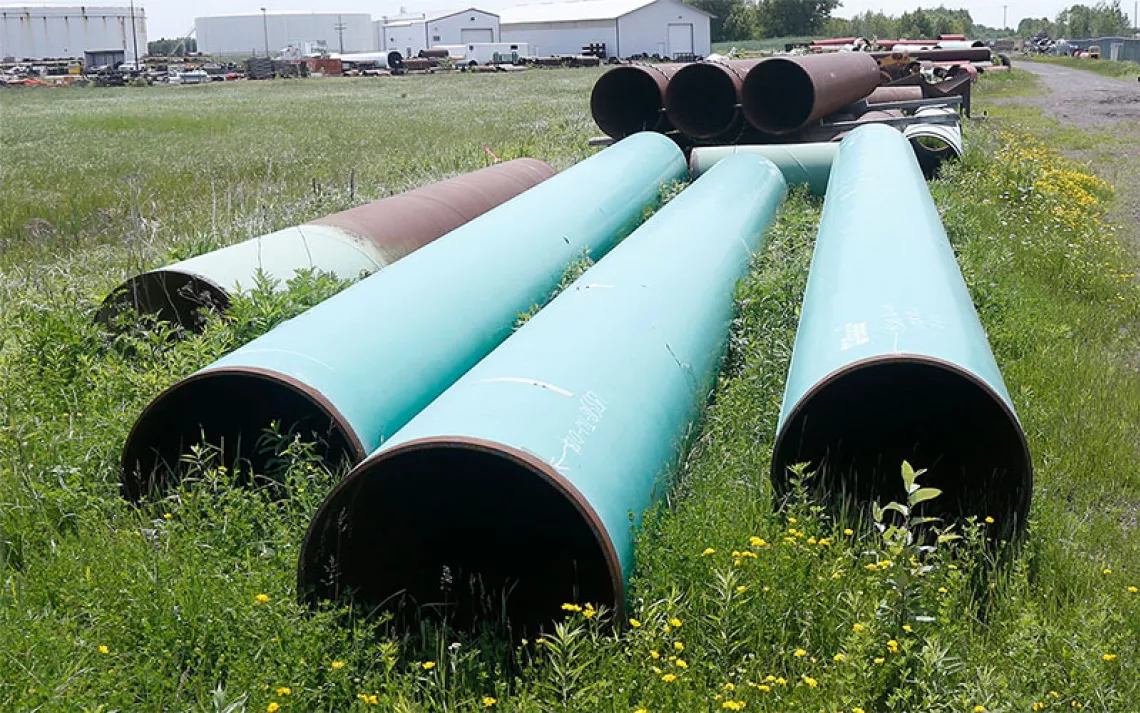The Appalachian Trail Is the "Lousiest Place" to Put Two Pipelines
FERC signs off on Mountain Valley and Atlantic Coast pipelines over concerns

Photo by Springfrom/iStock
A pair of pipelines designed to snake across the scenic Blue Ridge Mountains and part of the Appalachian Trail are facing pitched opposition along the route.
The 300-mile Mountain Valley pipeline would funnel natural gas drawn from the hydraulic fracturing boom in the Northeast from upper West Virginia to an existing pipeline network in southwestern Virginia. The Atlantic Coast pipeline would start from the same area and stretch twice as long, ending west of Wilmington, North Carolina. The Atlantic Coast route also includes a 70-mile spur that would lead to the Virginia coast near Norfolk.
Both lines are up to 42 inches across. They would traverse terrain critics say is both scenic and poorly suited to heavy infrastructure. Much of it is karst—unstable terrain where bedrock has been eaten away by groundwater, leaving it prone to sinkholes and vulnerable to pollution.
To build the lines, workers would have to clear a right-of-way up to 125 feet wide. And since many of the ridges they traverse aren’t that wide, the companies would have to flatten them to meet that requirement.
“Even if you’re 100 percent gung-ho for pipelines, this is the lousiest place to build a natural gas pipeline,” said Lewis Freeman, executive director of the Allegheny-Blue Ridge Alliance. “They don’t know what they’re getting into.”
The alliance has brought together 52 organizations, including the Sierra Club, to fight the projects. The opposition has hit a snag in the past month, as the Federal Energy Regulatory Commission (FERC)—which oversees interstate pipelines—has signed off on environmental impact statements for both projects despite criticism that those statements understate the hazards posed.
“You’d shave the tops of 38 miles of mountain ranges just for one of these pipelines,” said Jamshid Bakhtiari, Virginia field coordinator for the Chesapeake Climate Action Network.
The Mountain Valley pipeline in particular would cut across the Appalachian Trail at one point and run within sight of it for roughly 100 miles, said Andrew Downs, director of the Appalachian Trail Conservancy’s Virginia office. The conservancy argued that the pipeline should be built along existing infrastructure rights-of-way as much as possible, but the builders chose to follow their own route, he said.
“As a result, there would be a whole new corridor cut that drastically changes the kind of look and feel of the landscape as viewed from multiple vistas on the Appalachian Trail,” Downs said.
The trail conservancy has worked with other firms to minimize the visibility of other infrastructure built along the route, Downs said. It has raised objections to parts of the Atlantic Coast pipeline as well and urged the builders to change the route to accommodate them. But the Mountain Valley route is “more significant and more problematic,” he said. “These intrusions specifically undermine the purpose and nature for which the Appalachian Trail was created.”
The fight has mobilized activists like Jorden Revels, a 19-year-old student at the University of North Carolina at Pembroke, who convinced his school’s student government to come out against the Atlantic Coast pipeline. Revels is a Native American from the state’s Lumbee tribe; he says the pipeline has been plotted out with minimal concern for the low-income, heavily Native American and African American population of the area.
“In Robeson County specifically, a lot of our people are dependent on subsistence fishing. A lot of our people still use these waterways both for sustenance as well as recreational use like swimming and rafting,” Revels said. Debris and runoff from the pipeline work could damage those rivers and streams, he said.
In approving the environmental impact statement for the project in late June, FERC found there would be some “long-term and significant” harm, particularly where a right-of-way would have to be cut through forests. But it said most other effects “should be temporary or short-term.” A similar decision for the Atlantic Coast pipeline found that the builders had provided plans to reduce its impact “to less-than-significant levels.”
The companies behind the pipelines say they’re needed to get fuel from the fracking-country gas wells of western Pennsylvania and eastern Ohio to communities on the East Coast. They argue that the industry can manage the risks of tricky terrain like karst and that the gas is needed to replace dirtier coal-fired power plants as well as to heat homes.
But while gas is cleaner than coal pound-for-pound, Bakhtiari said, the projects would enable the continued burning of fossil fuels for decades to come—adding more emissions of planet-warming carbon dioxide and other gases into the atmosphere.
“The fact that some coal power plants are closing would be completely negated by the construction and use of these pipelines,” he said.
FERC must still issue a final certificate approving the pipelines, but there’s little optimism that the typically industry-friendly agency will stop them, Bakhtiari said. Organizers are lobbying state agencies to deny the projects' permits under the Clean Water Act, knowing that any one state’s refusal could block the whole project.
In Virginia, activists are trying to argue that the state Department of Environmental Quality needs to assess every point at which the pipeline crosses a waterway separately. That would string out the process and illustrate the risks more clearly, he said.
“All of the information we have from experts like engineers, geologists, and hydrologists tell us there’s no way these pipelines could pass these tests,” Bakhtiari said. “They’re unprecedented, and nothing like this has ever been proposed in the state of Virginia before.”
And there’s always the threat of litigation: Landowners along the Mountain Valley route filed suit in a federal court in Roanoke, Virginia, last week, arguing that the project would result in the illegal seizure of private property for a private company’s profit.
The battle has fractured normal party lines in Virginia, where voters will pick a replacement for Democratic governor Terry McAuliffe in November. McAuliffe supports both projects. So does the Republican nominee for governor, former national GOP chief Ed Gillespie. Backers can point to a list of Democrats and traditionally Democratic-leaning unions who are supporting the pipelines.
But Lieutenant Governor Ralph Northam, the Democratic nominee, has said only that state regulators should give the pipelines “as thorough and environmentally responsible” a vetting “as permitted under state and federal law.” And Republicans like Chris Tuck, the chairman of the Montgomery County Board of Supervisors in western Virginia, have lined up solidly against the plans for their communities.
The Mountain Valley pipeline offers no economic benefit to the Montgomery County, home to Virginia Tech University, and would hurt some property owners’ land values, Tuck said.
“We’re a 4-3 board, four Republicans and three Democrats. But we’ve been unified about our opposition to the pipeline,” he said. The line would pass too close to home—many of which rely on wells for drinking water—and over long-abandoned coal mines—and if the pipeline leaks or a sinkhole emerges underneath it, “You’re going to have some major issues,” he said.
“If there is an explosion, the plan is to evacuate and shut the line off,” Tuck said. “But when you’re talking about a 42-inch pipeline, high pressure with a lot of gas going through it, you’re talking about a serious environmental and health issue.”
April DeMotts, one of the county’s Democratic supervisors, described Northam’s stance as “distressing.” But she said he’s under extensive pressure from people in southwestern Virginia who want him to reconsider.
“I’m hopeful that he’ll visit the area and walk the path of the pipeline and see the concerns with his own eyes, and see why the citizens are concerned about a major infrastructure project like a 42-inch pipeline crossing terrain that’s covered in sinkholes and abandoned coal mines,” she said.
 The Magazine of The Sierra Club
The Magazine of The Sierra Club



